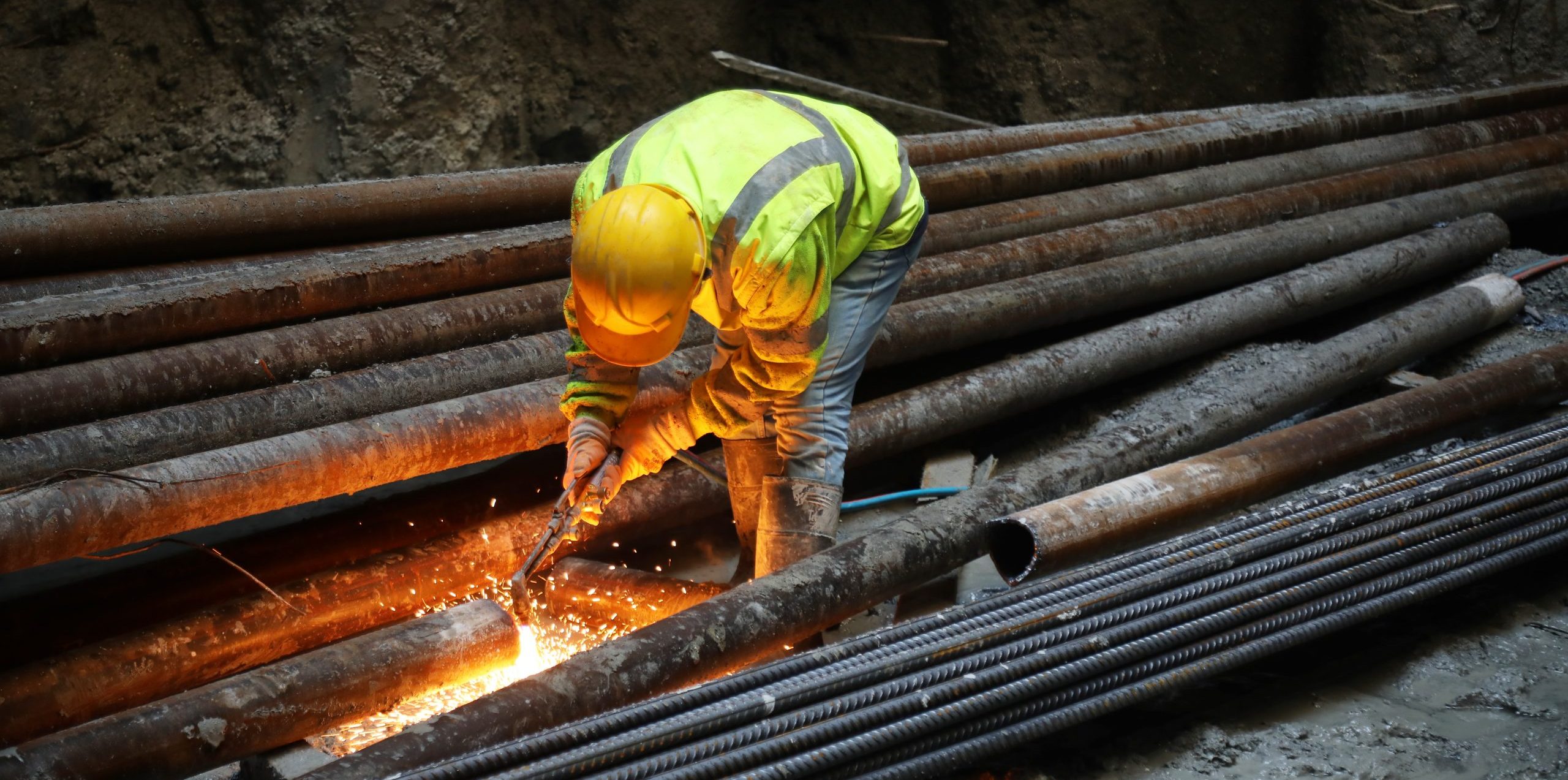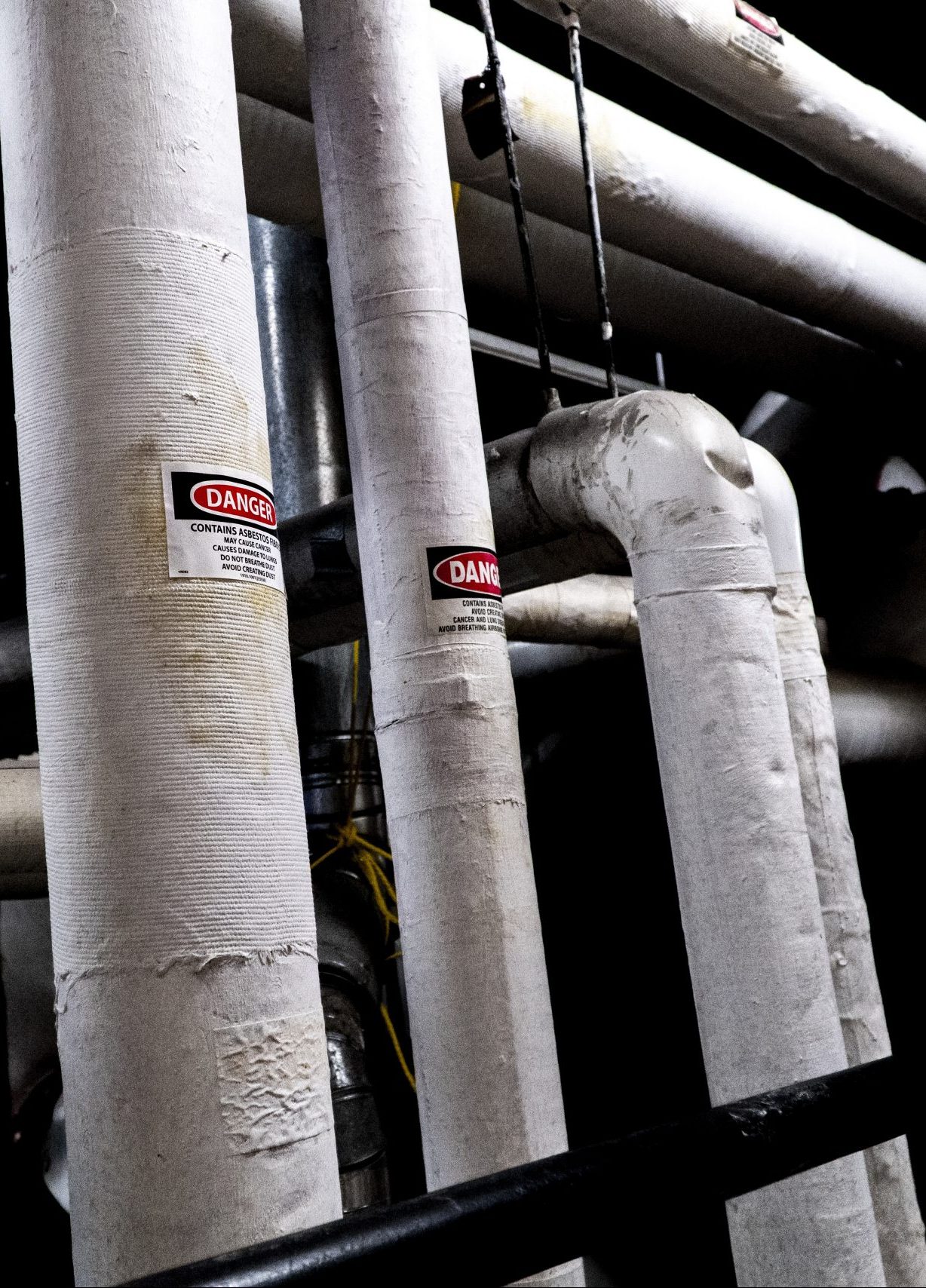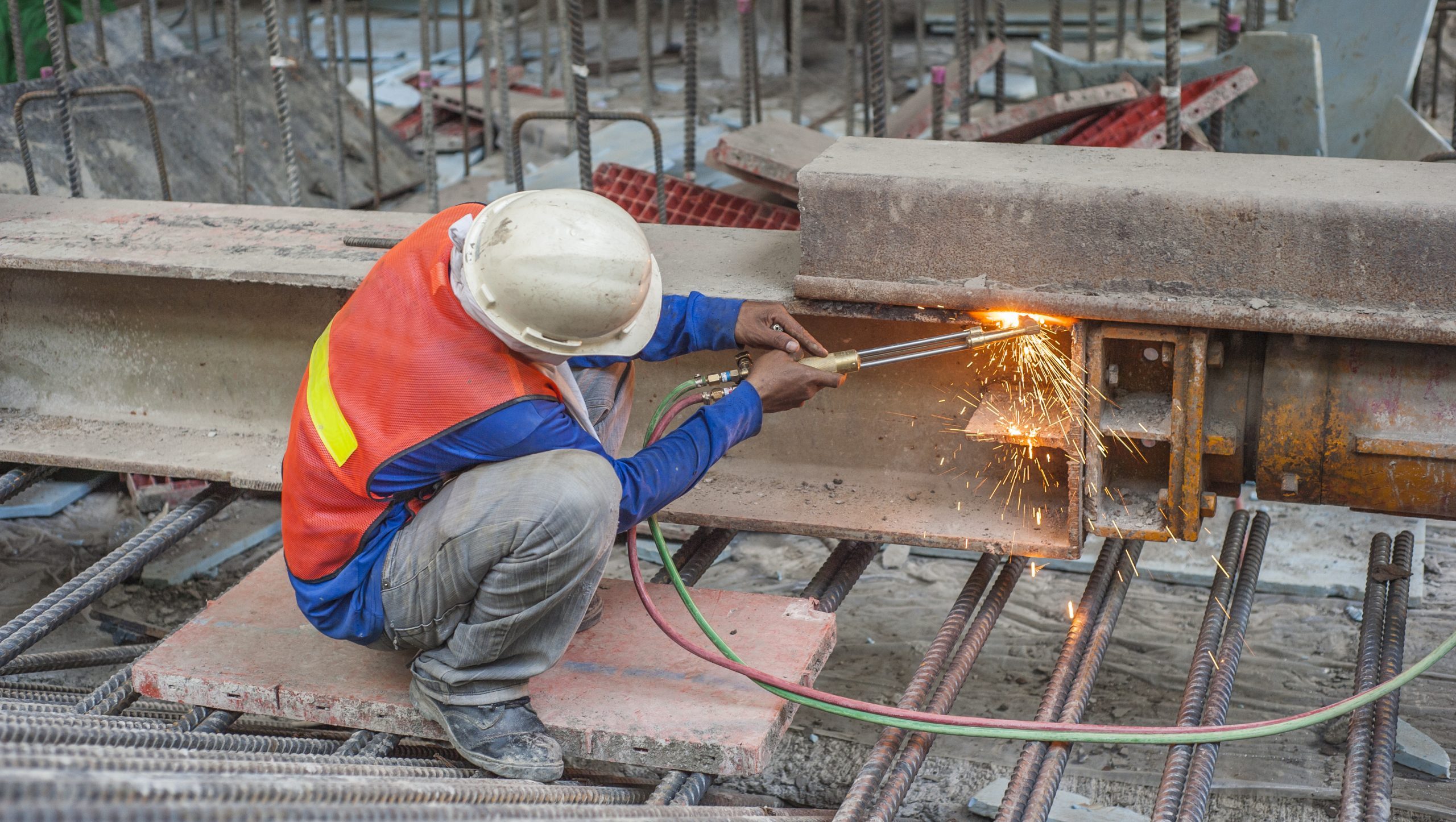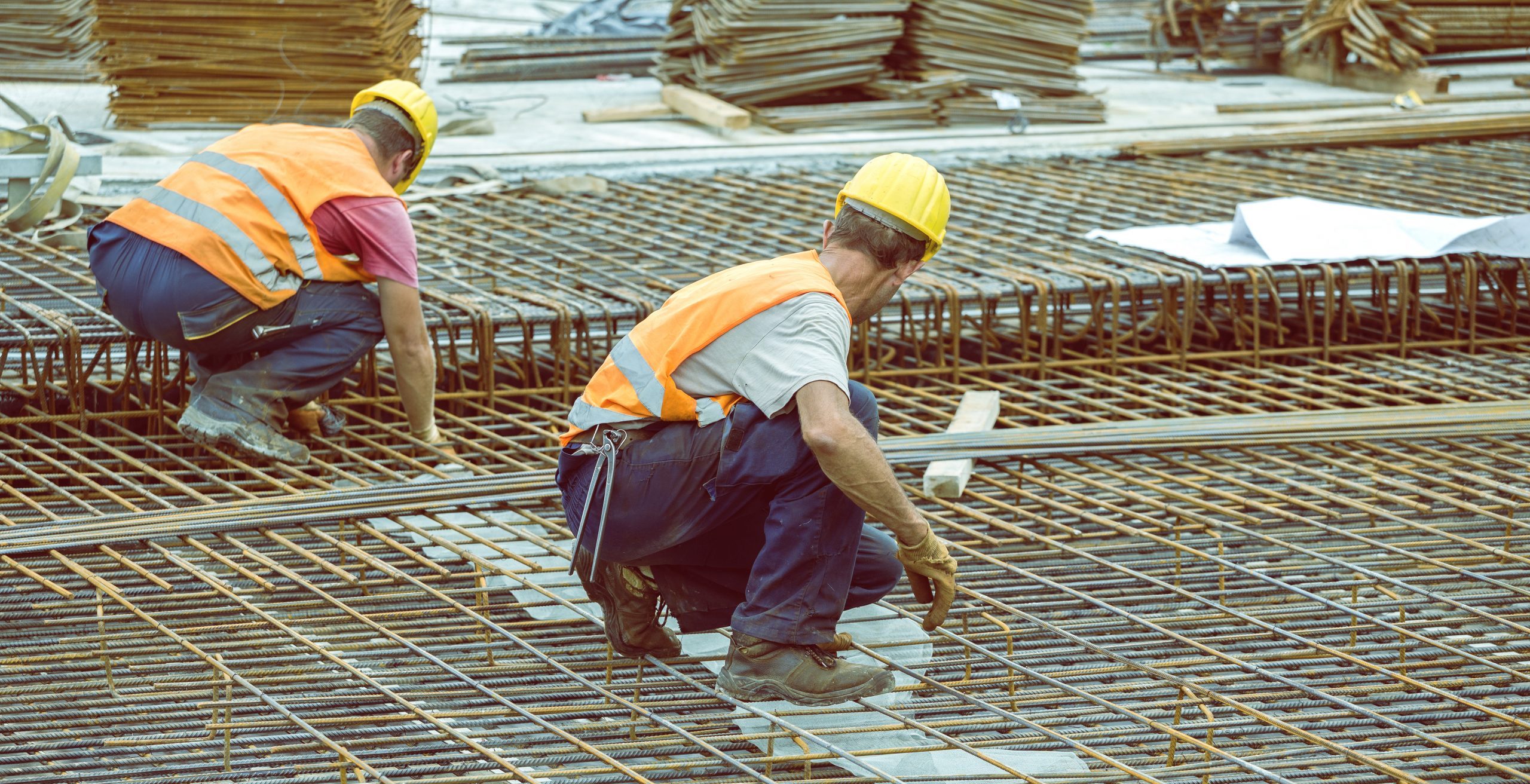Ironworkers and Mesothelioma
The U.S. Bureau of Labor Statistics reports that nearly 100,000 people currently hold jobs as ironworkers involved in erecting, retrofitting, or demolishing structures and infrastructure.
Unfortunately, it did from time to time happen that tiny particles of the asbestos composited into or applied over structural steel, reinforcing iron, and precast concrete managed to enter the air, where they were inhaled or ingested by unsuspecting ironworkers.
Accordingly, ironworkers employed in the trade between the 1940s and possibly as late as the 1990s became potential candidates to develop mesothelioma, asbestos lung cancer, asbestosis, and other conditions scientifically linked to occupational asbestos exposure.
Ironworkers employed in the trade from the 1990s through today no longer handle asbestos products in the routine course of their jobs. Makers of structural steel stopped adding asbestos in the 1970s and supplies of construction products containing asbestos were used up within a decade after that. Even so, ironworkers now still can come into contact with asbestos if they help retrofit or demolish structures and infrastructure erected prior to the 1990s.
The concern with regard to asbestos exposure is it can set the stage for the onset of mesothelioma and other asbestos diseases 10 to 50 years down the road. Owing to that long latency, when these diseases develop, ironworkers and their loved ones are often caught off-guard.
The good news is that mesothelioma and other asbestos disease can be fought. What’s more, ironworkers locked in that battle need not wage the fight alone. Among others standing ready to offer aid and comfort are mesothelioma lawyers and law firms dedicated to seeking compensation to help fully pay for the medical care and other financial needs of asbestos-injured ironworkers.

Who qualifies as an ironworker?
Tasks typically performed by ironworkers include:
- Joining girders and beams to form a skeletal structure
- Assembling prefabricated buildings
- Working with non-metal materials as required
- Installing interior wall studs
- Installing concrete-supporting floor and ceiling joists
- Installing metal decking
- Installing steel for architectural or ornamental purposes
- Installing metal stairways and railings
- Readying cranes and derricks for use
- Unloading deliveries of girders, beams, and rebar
- Working with equipment to cut, bend, drill, and rivet steel
- Welding
Ironworkers help build many types projects. These include:
- Homes
- Offices
- Malls
- Distribution centers
- Schools
- Hospitals
- Government buildings
- Factories, mills, and foundries
- Roads
- Bridges
- Harbors
- Airports
Ironworkers and asbestos exposure from structural steel
Girders and beams are cast from pig-iron ore heated to a molten state in a gigantic furnace. Impurities are removed by blowing oxygen-rich air over the molten mass (the techniques for doing this are now highly advanced compared to the way it was done by its British inventor, Henry Bessemer, in the 1800s). Back in the 1940s and extending into the 1970s, asbestos was often mixed into the refined molten steel to improve the performance and aesthetic characteristics of the finished product.
Asbestos composited into the pig iron (or applied afterward as a coating) posed a serious health problem for ironworkers. The problem began when finished steel goods were cut, drilled, riveted, hammered, or otherwise worked on at the jobsite.
The problem, basically, was that these actions were capable of causing tiny bits of asbestos to break free of its bond with the steel.
When asbestos breaks free, it tends to float in the air in much the same way that dust particles do.
And, like dust particles, free-floating asbestos fibers can remain in the air for hours and days before they settle.
The risk to ironworkers was that they might walk through a nearly invisible cloud of floating asbestos particles and inhale or ingest some of them.
The risk was small if the work was performed in an open area, such as 500 feet up in the sky as a high-rise office tower took skeletal shape. The wind would catch the asbestos and blow most of it away before it could be breathed in or swallowed.
But the risk was significantly greater if the work was performed in an enclosed area. Without wind to carry the particles away, asbestos fibers could inhabit the air in sizable quantity and make it almost unavoidable for any ironworkers present to avoid taking in at least some flecks of asbestos.
Once inside an ironworker’s body, the asbestos fibers usually remain there. Then, after one or more decades, those asbestos particles can cause mutations in the healthy cells of the lungs or intestines, with mesothelioma or another asbestos disease a potential consequence.
Ironworkers and asbestos exposure from fireproof insulation

In the eyes of many, asbestos was the ideal insulator. The mineral was plentiful and cheap. As well, it was very effective at preventing structural steel during a fire from reaching a temperature high enough to permit weakening and eventual structural collapse.
There were two main ways to fireproof structural steel. One was to spray on an asbestos-laced insulating material. The other was to brush on a coat of specialized paint that contained asbestos.
The paints were known as intumescent coatings. One advantage of intumescent coatings was they created more distance between the flames and the steel. In the event of fire, the paint would react to the rising heat. The hotter things became, the bigger the reaction. The manifestation of the reaction was a swelling of the paint. The amount of swelling was considerable—upward of 10,000 percent of the paint’s original applied thickness. By keeping the flames from getting too close to the steel, the integrity of the steel could remain unaffected for a longer time before the flames were extinguished.
Beyond sprays and paints, there also was rigid-board fireproofing—favored in applications where blocking noise and increasing the energy efficiency of interior climate- systems were desired.
Still another steel fireproofing method entailed wrapping structural steel members in an asbestos blanket. The concept was similar to that of intumescent coatings. That is, the blankets created a thick buffer separating steel from fire.
There was also the choice of asbestos-containing concrete. In this fireproofing method, concrete was poured all around the structural steel. This required creating forms into which the concrete could be poured. This wasn’t the most elegant way to fireproof (owing to its poor aesthetics, concrete encasements were mostly used in parking garages).
Still, by whatever means the asbestos was added or applied, it posed a health risk for ironworkers. That was because asbestos fireproof materials could be chipped or in some way marred in the course of onsite installation. That would be sufficient to expel particles of asbestos into the air.
The same would occur were asbestos-protected steel to be cut, drilled, riveted, hammered, filed, sanded, polished, or in any way jostled.
Asbestos released into the air put ironworkers at risk. The risk arose from tiny particles of asbestos becoming lodged in the lungs as a result of inhalation. Alternatively, asbestos particles might become trapped in the intestines as a result of ingestion.
By whatever means this lodging occurred, the consequences of it could be serious. It is widely recognized in the medical field that inhaled or ingested asbestos can cause healthy cells to undergo a transformation that ends with them becoming cancerous.
The two cancers most associated with asbestos exposure are mesothelioma and asbestos lung cancer.

Ironworkers and asbestos exposure from reinforcing iron
Cement pours are a big feature of the job for rodbusters. Not many decades ago, the cement they used likely contained asbestos to improve performance.
That was one way by which rodbusters could come into contact with asbestos. Another was by welding rebar—the welding rods they used 40 years ago contained asbestos.
In effect, any construction material or piece of equipment containing asbestos was a potential hazard to ironworkers like these from the 1940s onward.
Asbestos when it is disturbed, fibers from that asbestos can break free and get into the air that ironworkers breathe. Once inhaled, those particles can enter the lungs and remain trapped there for decades (or, in the case of asbestos that is swallowed, trapped within the intestines for same length of time. Eventually, the asbestos particles can cause cellular mutations that trigger the onset of mesothelioma, asbestos lung cancer, and other asbestos-related diseases.
Ironworkers and asbestos exposure from working alongside other trades
In addition to the risks of asbestos exposure from structural steel and other materials and equipment, ironworkers between the years 1940 and 1990 were at risk of coming into contact with the carcinogenic mineral simply by showing up at the jobsite.
If a project were tightly sequenced, it could mean ironworkers would find themselves sharing site space with not just electricians but also plumbers, bricklayers, painters, and others. In the period between 1940 and 1990, all of those other trades—and more—made use of construction materials and equipment and tools containing asbestos.
For example, it might be that an ironworker was onsite to install metal railings on a day when painters were working just a few feet away, brushing on paints to which asbestos had been added for the sake of improved luster, ease of application, and anti-scuffing resistance.
At the time, the ironworker might not have given any thought to the possibility that asbestos particles from the paint—roughened in preparation of receiving another coat—were floating in the air he or she was breathing.

Ironworkers and asbestos exposure from personal protective equipment
Unfortunately, gloves and the like wear out from long use. They split open or they fray. And, when that happens, out can come the asbestos stuffed within.
Once more, asbestos fibers would have entered the air and been inhaled or ingested. Ten to 50 years or more later, the asbestos fibers that never came back out of those ironworkers’ lungs or intestines might produce mesothelioma, asbestos lung cancer, asbestosis, or other asbestos-related conditions.
Ironworkers’ rights to compensation after asbestos exposure
Money to compensate you for the costs of treatment, lost wages, and other damages may be available to you or that loved one.
You may have the option of bringing a lawsuit against the company or companies responsible for causing the asbestos exposure. If so, you might be awarded a substantial sum in compensation.
Alternatively, the company or companies being sued by you or your loved one may wish to avoid a costly trial and will instead propose a generous settlement offer out of court.
There also is a special system set up to compensate ironworkers when the target of a potential lawsuit can’t be taken to court at all because that would-be defendant filed for bankruptcy protection.

About the author…
Beth Gori graduated from the State University of New York at Buffalo in 1995 with a degree in Biology. She attended law school at St. Louis University and graduated with a J.D. and certificate in Health Law Studies in 1999.